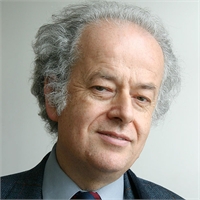Abstract: Conventional optical components such as lenses and holograms rely on gradual phase shifts accumulated during light propagation to shape light beam. New degrees of freedom in optical design are attained by introducing in the optical path abrupt phase changes over the scale of the wavelength. In this talk, we will discuss the results presented in [1], where a two-dimensional array of plasmonic resonators in form of V-shape antennas with spatially varying phase response and sub-wavelength separation can imprint such phase discontinuities on propagating light.
We demonstrated that a linear phase variation on the interface between two media leads to anomalously reflected and refracted beams in accordance with generalized laws of reflection and refraction derived from Fermat's principle. If we consider an interface with a phase gradient arbitrarily oriented with respect to the plane of incidence rather than parallel to it as in Ref. [1], the reflected and refracted beams are non-coplanar with the incident beam, leading to a three-dimensional generalization of the new laws of reflection and refraction [2] . Out of plane refraction has been experimentally demonstrated [2].
Phase discontinuities enable wavefront engineering with unprecedented flexibility, including novel ways to generate vortex beams, which is promising for a wide variety of planar optical components [3]. Optical phased arrays with subwavelength control of light parameters could lead to a flat optics technology capable of large scale applications including novel reflectarrays, transmitarrays and spatial wave modulators.
[1] N. Yu, et al. Science 334, 333 (2011)
[2] F. Aieta, et al. NanoLetters, 12, 1702 (2012)
[3] P. Genevet, et al. Appl. Phys. Lett. 100, 13101 (2012)
Biography: Federico Capasso is the Robert Wallace Professor of Applied Physics at Harvard University, which he joined in 2003 after a 27 years career at Bell Labs where he did research, became Bell Labs Fellow and held several management positions including Vice President for Physical Research. His research has spanned a broad range of topics from applications to basic science in the areas of electronics, photonics, nanoscale science and technology including plasmonics, metamaterials and the Casimir effect. He is a co-inventor of the quantum cascade laser; he recently performed the first measurement of the repulsive Casimir force and has been involved in research on plasmonic metasurfaces aimed at engineering the wavefront of light. He is a member of the National Academy of Sciences, the National Academy of Engineering, a fellow of the American Academy of Arts and Sciences; his awards include the King Faisal Prize for Science, the APS Arthur Schawlow Prize, the IEEE Edison Medal, the Franklin Medal, the Berthold Leibinger Zukunftspreis (the future prize), the Julius Springer Prize for Applied Physics, the Jan Czochralski Award of the European Material Research Society for lifetime achievements in Materials Science.


